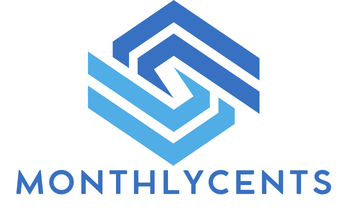A smooth month-end closing boosts financial accuracy and stakeholder confidence. Yet, many teams face bottlenecks, last-minute errors, and compliance risks that hinder efficiency. Highlighting strategic approaches like automation, clear workflows, and continuous review—can transform this critical process. Understanding how to streamline closing activities not only saves time but also enhances data integrity and regulatory adherence, ensuring your financial reports are timely, accurate, and audit-ready.
Overview of Month-End Closing Challenges and Objectives
Month-end closing is a critical process for any finance team, involving the consolidation of financial data, reconciliation of accounts, and preparation of reports. However, it frequently encounters common bottlenecks and delays that hamper efficiency. Identifying these bottlenecks is essential to optimize the month-end closing process. Typical issues include incomplete or inaccurate data entries, delayed submissions from various departments, and inefficient reconciliation methods.
Also to discover : Maximizing fundraising success: creative virtual event tactics for uk charities
To address these challenges, organizations must define clear objectives for a streamlined closing cycle. These objectives often focus on reducing the closing time without compromising accuracy. Ensuring that all financial data is accurate and complies with regulatory requirements is paramount. Accuracy and compliance in month-end reporting not only maintain financial integrity but also build trust with stakeholders and auditors.
Improving the closing process requires a balance between speed and precision. By targeting known bottlenecks—such as manual reconciliations and lack of standardized procedures—finance teams can enhance both effectiveness and timeliness. Adopting month end close best practices helps guide teams in implementing more structured workflows that support these objectives. Ultimately, overcoming these challenges lays the foundation for a robust, efficient month-end closing process.
Also read : Unlocking enhanced augmented reality shopping: innovative tactics for uk retailers
Planning and Preparation for Effective Month-End Closing
Building a strong foundation for accurate financial reporting.
Effective month-end closing starts well before the final day of the month. Planning and preparation are crucial to streamline processes, reduce errors, and ensure all financial data is accurate and complete.
A key strategy is to establish standardized closing checklists and timelines. These checklists serve as practical guides that outline every necessary step, from reconciling accounts to verifying journal entries. Setting firm deadlines within these timelines helps maintain a steady flow, preventing the rush that leads to mistakes during month-end close.
Equally important is assigning roles and responsibilities clearly across the finance team. When everyone knows their tasks and accountability areas, coordination improves and bottlenecks diminish. This delegation fosters ownership and enables smoother collaboration, particularly during peak closing periods.
Finally, scheduling key tasks strategically throughout the month can reduce last-minute pressure. For example, preparing preliminary reconciliations and key adjustments earlier allows ample review time, minimizing risk of inaccuracies. These proactive steps enhance the overall efficiency and reliability of the month-end closing process.
Automation and Technology Integration
Enhancing efficiency with modern tools
Automation and technology integration have revolutionized how organizations approach the month end close process. Implementing financial automation tools significantly reduces manual effort by automating routine tasks such as data entry, journal entries, and reconciliations. For example, advanced accounting software can systematically track transactions, enabling faster and more accurate closing cycles.
Leveraging AI and machine learning is a game-changer in month end close best practices. These technologies improve data reconciliation by identifying discrepancies and patterns that may be missed by human review. AI-powered systems can learn from past data, continuously enhancing accuracy and speeding up various close tasks. This not only streamlines workflows but also minimizes the risk of errors.
Another key benefit is the availability of real-time data access through dashboard reporting. Managers and accountants receive instant insights into financial status, enabling proactive decision-making and faster issue resolution. Dashboards provide a clear overview of the closing progress, highlighting bottlenecks and ensuring adherence to deadlines.
By embracing these financial automation tools, companies can transform the traditionally complex month end close into a more predictable and efficient process. Combining AI capabilities with real-time reporting aligns perfectly with core month end close best practices that prioritize accuracy, speed, and transparency.
Data Management and Accuracy Enhancement
Ensuring the integrity of financial data is critical for effective month end close processes.
Data reconciliation strategies form the backbone of accuracy enhancement in financial reporting. Conducting thorough reviews to identify discrepancies early is essential. This involves comparing transactional records from various sources to pinpoint mismatches before they escalate. By catching errors promptly, organizations can prevent compounding issues that delay the month end close.
Automating data validation processes significantly reduces manual errors and enhances accuracy. Systems can be programmed to flag anomalies, missing entries, or inconsistent figures, making the review process more efficient. Automation also helps maintain data consistency across departments, a common source of delays when different units use incompatible or unsynchronized data sets.
Establishing clear guidelines for data management and consistent application of validation rules ensures all departments are aligned. This harmonization not only promotes trust in the numbers but also expedites the month end close cycle, improving overall financial reliability.
For further insights on streamlining these processes, reviewing comprehensive month end close best practices can provide valuable frameworks to implement robust data reconciliation and management strategies.
Best Practices for Closing Procedures
Mastering month end close best practices requires a structured approach.
To ensure an efficient closing process, breaking down complex procedures into manageable steps is essential. This helps teams focus on individual tasks without feeling overwhelmed by the entire scope. By segmenting workflows, organizations can clearly assign responsibilities and monitor progress across each part of the month end close cycle.
Establishing a closing calendar with deadlines further streamlines the process. A well-structured calendar sets clear expectations, enabling finance teams to prioritize tasks and avoid last-minute pitfalls. The calendar should highlight key milestones and deadlines for reconciliations, adjustments, and final reviews, aligning everyone’s work toward a common goal.
Regular team communication and progress updates are crucial for maintaining momentum. Frequent check-ins allow the team to address issues promptly and ensure alignment throughout the closing period. This collaborative approach reduces errors and accelerates the overall timeline, giving finance professionals confidence that they are meeting the high standards of month end close best practices.
Internal Controls and Compliance Assurance
Ensuring financial integrity and adherence to standards
Internal controls are fundamental in maintaining accurate financial reporting and compliance with accounting standards. One key component is segregation of duties, which helps prevent fraud and errors by dividing responsibilities among different individuals. For example, the person responsible for recording transactions should not be the same one authorizing payments, thereby reducing the risk of misappropriation.
Documenting procedures systematically is also critical. Clear records ensure the organization is prepared for audits, providing transparency and traceability for all financial activities. This documentation supports consistent month end close processes and safeguards against discrepancies.
Regular monitoring plays a vital role in compliance assurance. This ongoing review guarantees that all financial activities align with established accounting standards and internal policies. Frequent assessments help identify weaknesses in controls early, allowing timely adjustments.
By integrating robust internal controls and compliance practices, organizations can promote accuracy and reliability in financial reporting. These measures uphold accountability and provide confidence in the overall financial management process. For those aiming to refine their procedures further, exploring detailed month end close best practices can enhance control frameworks effectively.
Post-Closing Review and Continuous Improvement
Optimizing your month end close process relies heavily on thorough post-closing review and continuous improvement.
Conducting post-mortem reviews immediately after closing is crucial to pinpoint inefficiencies. These reviews evaluate every step of the month end close, identifying bottlenecks such as delayed reconciliations or approval lags. By isolating these pain points, teams can directly target areas for improvement.
Incorporating feedback from stakeholders including accounting staff, controllers, and external auditors ensures workflow optimization aligns with real-world challenges. This feedback loop often reveals overlooked hurdles, such as unclear responsibilities or redundant tasks, which once addressed, significantly streamline subsequent closes.
Tracking key performance indicators (KPIs) like close cycle time, number of adjusting entries, and error rates provides measurable insights for future cycles. Monitoring these KPIs consistently helps organizations establish benchmarks and observe progress over time, making continuous improvement a data-driven practice.
07. Paragraphs
Effective communication channels are essential to synchronize team efforts during the month end close process. Establishing structured touchpoints ensures all team members stay aligned on deadlines, outstanding tasks, and urgent issues. Clear channels whether through project management tools, regular meetings, or instant messaging platforms—reduce the risk of miscommunication that can delay closing or affect data accuracy.
Automation plays a pivotal role in minimizing manual entry errors and saving valuable time. By integrating automated workflows and reconciliation tools, teams can streamline repetitive tasks such as data importing and ledger updates. This reduces human error dramatically while allowing financial professionals to focus on analysis rather than data entry. The benefits of automation extend to providing real-time visibility into the close progress, increasing efficiency and confidence in the process.
Finally, ongoing training is crucial to keep finance teams updated on evolving financial systems and compliance standards. Scheduling regular sessions ensures that everyone understands the latest software capabilities, regulatory requirements, and internal best practices. This proactive approach prevents compliance risks and improves the overall quality and speed of the month end close. Emphasizing continuous learning fosters adaptability and resilience within the team amidst changing financial landscapes.
For detailed methodologies, exploring month end close best practices can guide creating efficient, error-resistant closing strategies.











